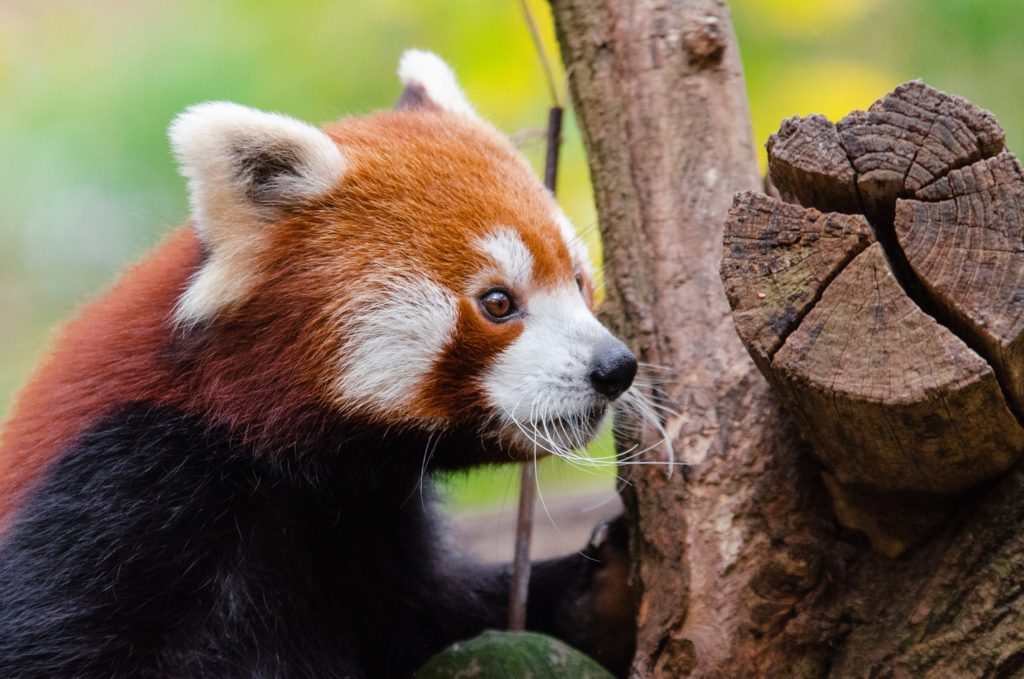No Panda Pets!

Some at-risk species suffer from a lack of public attention and awareness. In the case of the red panda, too much misguided attention may be doing them harm by encouraging the black market trade of red panda pets.
Recently, reports have surfaced of wild red pandas in cages, presumably captured for the exotic pet trade. In January 2018, six red pandas were rescued from smugglers in Laos, and it’s believed there are other instances of smuggled red pandas that have yet to be detected.
In September 2018, the Red Panda Network launched a comprehensive campaign to halt the illegal trade of red pandas. In addition to exposing the illegal red panda supply chain, a critical part of this effort is educating the public on the reasons why wild red pandas must remain wild, and encouraging them to help us to spread the word so we can cease the demand for red panda pets. (Top photo: Patrick aka Herjolf/Flickr)
WHY RED PANDAS SHOULDN’T BE PETS
 Mark Dumont / Flickr
Mark Dumont / Flickr
Caring for a red panda is nothing like caring for a dog or cat, red panda expert and conservationist Angela Glaston explained to me in an email.
Red pandas are wild animals built for life outdoors and their nails are made to stay sharp so they can climb and cling to trees. Since their nails don’t retract into their paw pads like the nails of a cat, or quickly become blunt like the nails of a dog, “a red panda in someone’s home or apartment would shred furniture, curtains, and clothes,” Glaston said.
Life as a pet would be hard on a red panda’s health too, as they have thick fur suited to their native habitat and highly specialized diets consisting mostly of fresh bamboo shoots and leaf tips.
“They would be too warm to feel comfortable,” Glaston explained. “A private individual cannot really provide either the accommodation or the diet that they need. Their lives will be shorter and miserable as a pet.”
Moreover, buying a red panda is illegal. “Red pandas are protected by law in the countries where they originate. They may not be captured or killed legally,” Glaston said.
Red pandas are also protected by the Convention on International Trade in Endangered Species of Wild Fauna and Flora (CITES). This means a legal certificate must be issued before a red panda can be transported across international boundaries. A legal certificate will be issued if a red panda is going to a zoo as part of a breeding program, but not if they are to be sold as a pet, Glaston explained. “Therefore, any red panda you may buy is illegal.”
HOW THE BLACK MARKET PET TRADE IMPACTS RED PANDA POPULATIONS
Little is known about how red pandas are obtained for the black market pet trade, or which groups of red pandas are most vulnerable to the illegal pet trade, Glaston explained.
The potential impact of the black market trade is more certain for the small population of wild red pandas that’s estimated to be as few as 2,500 individuals.
“Even small scale exploitation could wipe out an area of red pandas in their already fragmented habitat,” Glaston said.
HOW RED PANDAS IN ZOOS DIFFER FROM RED PANDA PETS
 Art G. / Flickr
Art G. / Flickr
Red pandas in zoos play an active role in the conservation of their species. Domesticated pets are isolated (either in a home or apartment, or because they’ve been neutered or spayed) and don’t intermix with their larger population. In contrast, red pandas in zoos are interconnected as part of a worldwide breeding program of more than 600 Nepalese red pandas and 300 Chinese red pandas in zoos outside of China, Glaston explained.
This breeding program is important because it helps maintain genetically diverse, demographically viable, and behaviorally natural populations of the two red panda subspecies, Glaston said.
“They are an educational resource, they help raise funds for conservation, and form a valuable reserve population for reintroduction and restocking should that be necessary,” Glaston said.
“A pet red panda does none of these things,” Glaston continued. “It is not part of any managed population, it does not help raise money for conservation, there is no educational message, and its behavior would be far from natural,”
Any red panda kept as a pet is removed from both wild and captive breeding populations of the species. “Its genetic material is lost to an already depleted wild population,” Glaston said.
HOW YOU CAN HELP

Mathias Appel / Flickr
You can help stop the illegal red panda trade by sharing what you’ve learned here with others, and by being a red panda and zoo advocate.
Few people would want a red panda as a pet if they understood that owning them was harmful for the red panda’s health, and the red panda population as a whole. Educate your family, friends, and the public about the importance of keeping red pandas wild. Let people know it’s illegal to buy a red panda and communicate the harms of removing wild red pandas from already dwindling populations. Helping people understand the disastrous effects of the illegal red panda trade can end the demand for red panda pets.
You can also be a red panda and zoo advocate by teaching others about the important role red pandas in zoos play in conservation efforts and by promoting the Red Panda Network’s #NoPandaPets campaign on social media. If you see a photo or video of red pandas that promotes the idea of having a red panda as a pet, use it as an opportunity to educate others by posting our downloadable Fast Facts #NoPandaPets images in the comments section of the post. This downloadable image contains key facts about the illegal red panda pet trade and why we should keep red pandas wild.
Holly Alyssa MacCormick
Writing and Communications Volunteer
Red Panda Network
